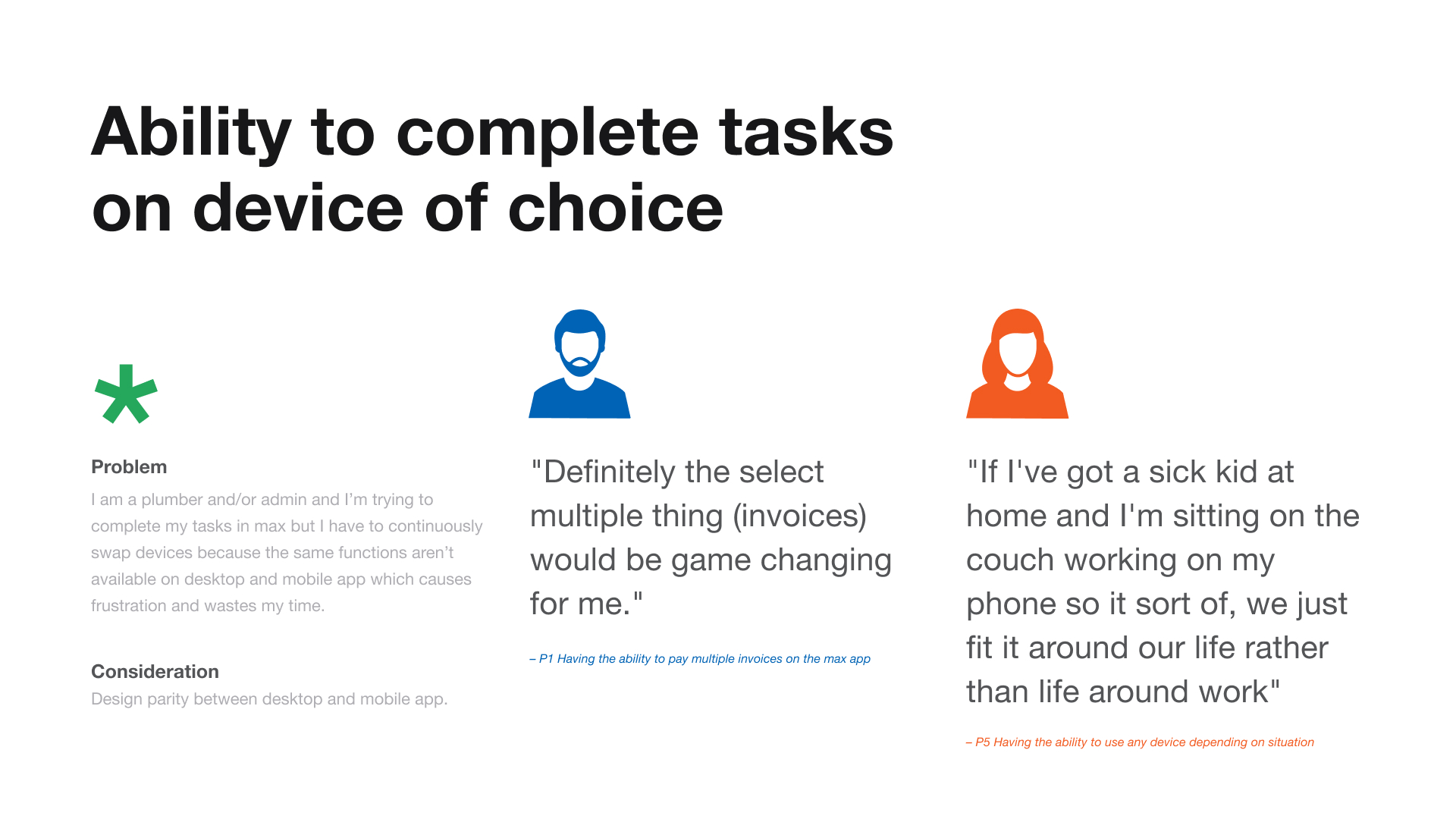We begun by doing a few base level interviews to understand our customers when it came to managing their finances. These initial interviews provided us with great insights and kept us in touch with our customers so we decided to turn it into an ongoing thing. Our interview questions are typically the same but any questions we have during a sprint or for an upcoming feature, can be included. Questions for our over arching theme for the quarter are added if there is something specific to Payments.
What is being researched?
• Account Payments. Establish a base level understanding about our customers when it comes to making
a payment and managing their finances.
• Validate some research that has been collected in the past.
• Identify future areas of investigation for Account Payments.
What are the primary goals and objectives of the user research project?
• Understand how they currently use max.
• Their thoughts and processes when managing their finances and making payments.
• Identify opportunities and other avenues for investigation within the payments space.
• Understand what we do well and what we could improve on to better serve our customers.
• What information, level of detail and jobs to be done should be actionable from the dashboard.
• Turn our learnings into actionable insights.
What will we deliver?
• A more defined understanding of our customers.
• Actionable insights to be considered for new features.
• Emerging themes for future investigation.
• Landscape review - to understand best practice.
What research method will be used to conduct the research? Why has this method been chosen? What equipment and hardware will be needed to successfully complete this research?
Not a lot of research has been done in the past for Payments and the team is new. We are looking to do some initial 30-45 minute interviews – base level inquiry that will guide both design and future areas of investigation.
Where will you find participants?
Initial participants were selected from our UX customer panel. We wanted a range of customers
and business sizes to compare. The same set of questions would be asked just with slight variations.
We used a screener when contacting our customers to make sure they met a certain criteria.
The main criteria being that they use the max app regularly to make payments.
What does ongoing qualitative research look like?
The goal of the Rolling study was to continuously speak to and keep in touch with our customers.
Generic payment questions were written with the ability to add any new questions related to upcoming
work in either our team or the wider team. This study is not designed to replace our usual research methods,
but to complement. The initial interviews provided great insights so turning it into a regular program of work
seemed like a good idea.
To manage this process we did a trial by hiring an external agency to recruit participants and scheduling.
We had a screener for these participants so we could still have a diverse range of business sizes and roles.
Not all methods are needed, it depends on the problem. The rolling study supports, helps clarify and prove our hypothesis.
Collecting the data
Note taking Miro board
Notes are taken during the interview by people who attend. Typically at the end of each session we have a discussion and pull out the main atributes, insigts and opportunities realised duing the interview. We also take verbatims or note down the time they mentioned something we would like to go back and capture.

Synthesising the data
Affinity mapping Miro board
A great task for the team to do together, especailly for team members who are unable to attend interviews. They have the opportunity to read the notes and verbatims and start mapping out themes.

One page overview of each customer
Key insights with problem statements






